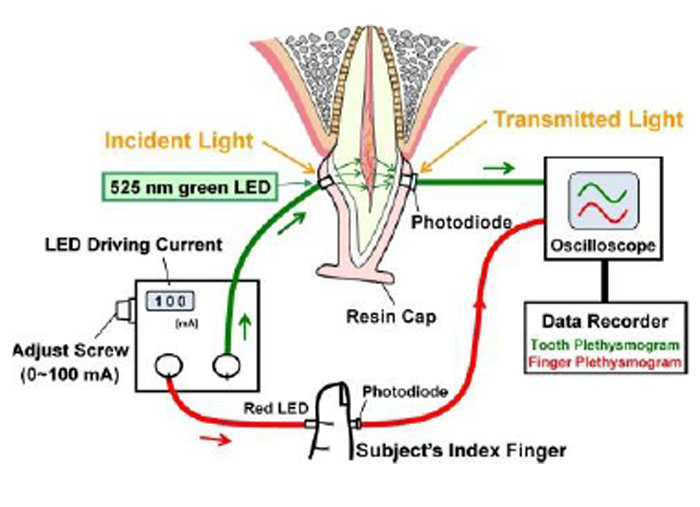- NEED HELP? CALL US NOW
- +919995411505
- [email protected]

Transmitted-light plethysmography (TLP) is a non-invasive and objective optical method that utilizes a single light-emitting diode (LED) to detect blood volume changes in the dental pulp
IT is an optical technique which can be used to detect microcirculatory changes in the pulp tissue.
It has been known to overcome the disadvantages of the electric pulp testing in terms of the objectivity and invasiveness.
It has been reported that the TLP signal is less likely to be contaminated by the blood circulation of surrounding tissues than laser Doppler flowmetry (LDF).
The TLP amplitude has a significant negative correlation with age in children, and the vital teeth had a significantly higher amplitude than the non-vital teeth with no pulse signal

MECHANISM
The system works by detecting the pulsation intensity of light transmitted through a tooth and visualizing the pulpal blood flow synchronized with the heartbeat. During the clinical follow-up, we found that TLP pulse amplitudes and pulse shape characteristics change gradually due to the pathological condition.
It was also studied that TLP was able to monitor the pulpal circulatory changes evoked by innocuous stimuli. Systemic autonomic nervous control mechanisms were not associated with the pulpal circulatory changes, suggesting the involvement of other mechanisms, such as somatosensory-sympathetic nervous control.




